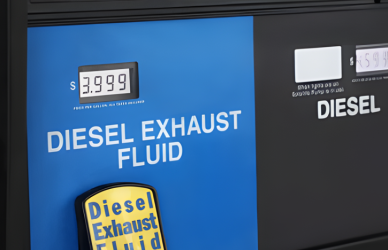As the demand for lithium, the “white gold” crucial for electric car batteries, skyrockets, automakers are engaging in a high-stakes competition spanning China, Nevada, and Chile to secure their supply chains.
General Motors Co. and parent company of China’s BYD Auto Ltd. have taken new measures by directly investing in lithium miners, a bold move in an industry traditionally dependent on external suppliers for raw materials like copper. Meanwhile, others are exploring investments in lithium refining and battery recycling ventures.
The looming threat of a lithium shortage has the potential to hinder plans to scale up sales of electric vehicles to mass adoption levels. This scarcity has ignited political conflicts over resource control and sparked concerns about the environmental impact of lithium extraction.
“We already have that risk” of not being able to get enough, GM’s chief financial officer, Paul A. Jacobson, said at a Deutsche Bank conference in mid-June.
“We’ve got to have partnerships with people that can get us the lithium in the form that we need,” Jacobson said.
Ford Motor Co. has secured long-term contracts with lithium suppliers across two continents, spanning up to 11 years into the future. In the same vein, Volkswagen AG and Honda Motor Co. are exploring recycling ventures as a means of reducing their reliance on newly extracted lithium.
While global lithium production is projected to triple over the next decade, the rapidly increasing demand for electric SUVs, sports cars, and sedans, which saw a 55% growth last year, has the potential to outpace supply. These vehicles require approximately eight kilograms (17 pounds) of lithium, alongside cobalt, nickel, and other metals.
“There will be a shortage of EV battery supplies,” said Joshua Cobb, senior auto analyst for BMI.
Lithium has become a new source of tension in the strained relationship between the United States and China. Both countries, along with other governments, are recognizing the importance of metal supplies for electric vehicles and are increasing controls on access. Last year, Canada ordered three Chinese companies to sell their lithium mining assets due to security concerns.
In an effort to maximize their reserves of lithium, cobalt, and nickel, other governments like Indonesia, Chile, and Zimbabwe are requiring miners to invest in refining and processing before they can export.
General Motors (GM) is taking a proactive approach by investing $650 million in a Nevada mine, the largest source of lithium in the United States. This move will give GM direct access to enough lithium for 1 million vehicles annually.
Meanwhile, conservationists and American Indians have filed a lawsuit to block the development of the Nevada mine, citing potential harm to water supplies, soil, and nesting grounds for birds.
Despite increasing production, the industry may face shortages of lithium and cobalt by 2025 if insufficient investments are made, as warned by experts from the International Energy Agency.
“Supply side bottlenecks are becoming a real challenge,” Paoli and Gul said in a report last year.
Automakers are considering investing their own money to build confidence in cautious miners, as explained by Alastair Bedwell of GlobalData. Miners are hesitant to fully commit to lithium production until they can be assured that the industry won’t shift to using batteries made with other metals.
The process of developing lithium sources takes several years, if these automakers are going all in now, they won’t see immediate return on their investments.
According to the U.S. Geological Survey, worldwide lithium resources are estimated to be around 80 million tons. Among the top lithium producers, Bolivia leads with 21 million tons, followed by Australia with 17 million tons and Chile with 9 million tons.
Projections for annual lithium production by 2030 range as high as 1.5 million tons, however, if sales of electric vehicles (EVs) continue to grow at double-digit rates, demand could increase to as much as 3 million tons.
EV sales surged in 2021, more than doubling from the previous year to reach 6.8 million units, according to research firm EV Volumes. Sales in the previous year reached 10.5 million units. China accounted for 60% of the sales, as well as two-thirds of production and three-quarters of battery manufacturing.
President Joe Biden has set a target for half of all new cars sold in the United States to be electric or zero-emission technology by 2030. This ambitious goal has sparked concern in both Washington and Beijing over access to crucial minerals like lithium and the potential for strategic competition.
To address these concerns, Volkswagen’s battery unit, PowerCo, joined forces with Canada last August to develop a reliable supply chain for “critical raw materials” such as lithium, cobalt, and nickel. This partnership demonstrates the importance of securing access to these resources.
The German chancellor, Olaf Scholz, expressed his support for cooperation with “close friends” in ensuring “raw material security.” This highlights the need for collaborative efforts in the face of growing demand for electric vehicles.
On the other hand, China’s government has accused the United States, Canada, Japan, and other governments of using fake security concerns to undermine Chinese competitors in electric cars, smartphones, clean energy, and other emerging technologies. This ongoing dispute shows the complexity surrounding the global race for dominance in these industries.
Meanwhile, some governments are open to Chinese investment. For example, China’s largest lithium producer, Ganfeng Lithium Co., acquired Argentina’s Lithea Inc. for a whopping $962 million last year. This highlights the value placed on securing access to lithium, a vital component in electric vehicle batteries.
As the shift towards electric mobility continues, securing a stable supply of critical minerals becomes increasingly important. The competition and collaboration between nations in this race highlights the significance of these resources for the future of transportation.
Source: Transport Topics











